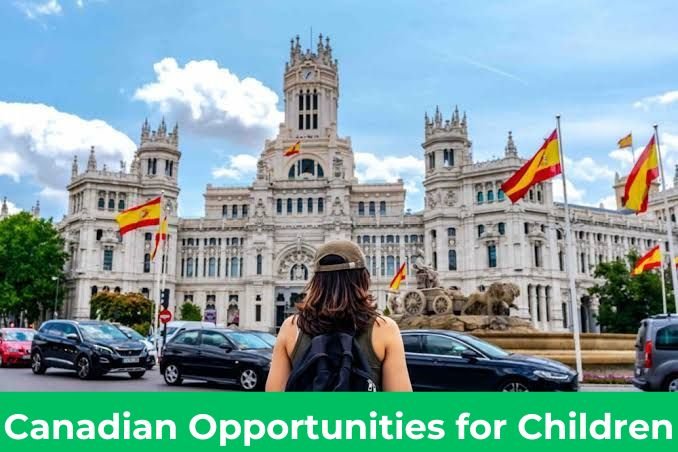It is not exactly immigration pundit stuff, but the US is set to welcome a record-high number of migrants in the remainder of 2024 and into 2025, despite the rising rhetoric opposing this trajectory.
The new administration may defy expectations and contradict its own statements. One thing remains clear: Trump is not particularly receptive to the BRICS coalition’s challenges against the dollar. If US immigration laws become punitive, restricting migration, other nations might retaliate, further complicating the global landscape.
This points to the likelihood that despite Trump’s tough immigration rhetoric, the US will welcome more visitors. The emerging global trends make self-isolation a risky move for sustaining US prominence. Tightening immigration laws at a time when the dollar faces new challenges may not serve America’s best interests.
The $25,000 visa sponsorship program is not only expected to see greater success but also relaxed rules during early 2025 and into the last quarter of next year.
Addressing Popular Emerging Concerns
Are you worried about the constant immigration narratives of the Trump administration? While Trump’s stance is not entirely bluff, the reality will soon catch up: the US cannot afford to adopt his version of immigration policies and still sustain the dollar.
So, what are you waiting for? Dust yourself off and pursue your US migration visa sponsorship dreams. Immigration reform or not, the US cannot isolate itself. It needs more brains and hands today than it did four years ago. If you have what it takes, there is no better time to apply for a US sponsorship visa than now.
Essential Brief on Visa Sponsorship
Visa sponsorship refers to the process employers use to migrate their employees or individuals they plan to employ. This procedure also applies to family sponsorship visas, where family members sponsor relatives for migration. Below is a summary of common visa sponsorship types and their corresponding purposes:
- O-1: Facilitates the migration of exceptional talent in arts, sciences, business, or athletics.
- L-1: Enables the transfer of executives and managers within multinational companies.
- L-2: Allows the dependents of L-1 visa holders to migrate.
- H-1B: Designed for professionals with specialized knowledge, often requiring a bachelor’s degree.
- H-2B: Targets temporary non-agricultural jobs, often in industries like hospitality.
- H-2A: Supports temporary agricultural work, such as harvesting and seasonal farming.
- R-1: Dedicated to religious workers.
- TN: Facilitates the migration of professionals from NAFTA countries (Canada and Mexico).
Securing Employment for Sponsorship
Before determining the suitable visa category, you need to secure employment and discuss sponsorship with your employer. If you lack reliable contacts or employment opportunities in the US, try the following remote strategies:
- Social Media: Platforms like LinkedIn, Facebook, and Twitter are great for connecting with employers and accessing job openings.
- Digital Publishers: Many traditional job boards offer online listings of employment opportunities.
- Search Engines: Online searches can yield critical information on potential employers and job vacancies in your target field.
- Professional Websites and Recruiters: Websites like LinkedIn and services like ZipRecruiter offer valuable resources for connecting with visa-sponsoring firms.
Responsibilities in the Sponsorship Process
Both the sponsor and applicant have key responsibilities:
Sponsor’s Responsibilities:
- Support: Assist migrants in adapting to US society and workplace culture.
- Guidance: Educate migrants on US laws and employment regulations to prevent violations.
- Eligibility Compliance: Ensure the job meets sponsorship criteria and that the migrant is qualified for the role.
Applicant’s Responsibilities:
- Provide Required Documents: Submit essentials like a passport, employment contract, health screenings, proof of expertise, and financial statements.
- Adhere to Immigration Requirements: Understand and comply with all labor and visa conditions to avoid complications.
Potential US Visa Sponsors
Here are a few US firms known for visa sponsorship:
- IBM (Tech Sector): Advocates for global workforce integration to power innovation.
- Wells Fargo (Banking and Finance): Promotes international collaboration by supporting a diverse workforce.
- Cleveland Clinic (Health Sector): Addresses workforce shortages by employing skilled foreign healthcare professionals.
- PepsiCo (Manufacturing): Builds an international workforce to support its global reach.
Conclusion
The US remains committed to attracting talented and industrious individuals. The remainder of 2024 is witnessing increased demand for foreign talent, and 2025 is expected to bring even greater opportunities. If you have the skills and determination, this could be your time to achieve the American dream.





